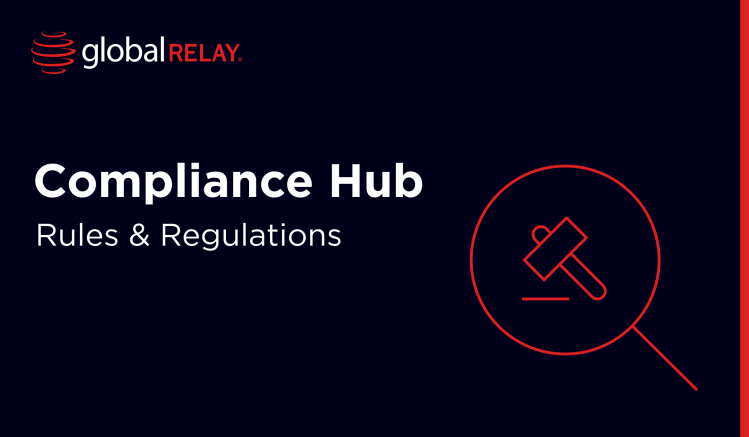
The Market Abuse Regulation: A complete guide
The Financial Conduct Authority (FCA) has publicly stated that preventing, detecting, and punishing market abuse is one of its core priorities. So how can firms effectively navigate the complexities of the Market Abuse Regulation?
Written by a human
In brief:
- The Market Abuse Regulation (often abbreviated to MAR) is the cornerstone of EU and U.K. market abuse legislation, encompassing rules on insider dealing, market manipulation, and related offenses.
- The Market Abuse Regulation comprises a stringent regulatory framework designed to bolster market integrity and investor confidence.
- The UK onshored the Market Abuse Regulation on December 31, 2020 in the wake of Brexit to ensure continuity and market stability and minimize disruption.
What is the Market Abuse Regulation?
The Market Abuse Regulation is an EU law that came into effect in July 2016. Market abuse regulations are nothing new; in fact the Market Abuse Regulation replaced the Market Abuse Directive of 2003 to better address abuse across new platforms and markets and tighten record-keeping requirements.
Fortifying financial markets through the Market Abuse Regulation
The goal of the Market Abuse Regulation is to increase investor protection and enhance market integrity to make the securities markets more attractive to investors.
The Market Abuse Regulation aims to stamp out market abuse, which erodes investor trust, by specifically targeting three core areas;
- Insider dealing
- Unlawful disclosure of inside information
- Market manipulation
The impact of Brexit on the Market Abuse Regulation: Onshoring changes
With the U.K.’s exit from the EU came a swathe of regulation onshoring, essentially converting EU laws into domestic laws to avoid gaps in the U.K.’s stature book. The Market Abuse Regulation was one such law. This is sometimes known as the Market Abuse (Amendment) (EU Exit) Regulations 2019, or simply the Market Abuse Regulation U.K.
It’s important to note however that there were some changes to the Market Abuse Regulation when it was onshored to the U.K., mainly surrounding;
- Notifications for delaying the disclosure of inside information
- Notifications for transactions of persons discharging managerial responsibilities
- The reporting of suspicious transaction and order reports
UK Market Abuse Regulation (often shortened to U.K. MAR) retains the same scope of financial instruments admitted to trading or traded on U.K. and EU trading venues. For more information about U.K. MAR, see the FCA’s Primary Market Bulletin 32.
What constitutes a breach of the Market Abuse Regulation?
The term ‘inside information’ is a key concept that features heavily in the EU Market Abuse Regulation.
Article 7 of Regulation (EU) No 596/2014 defines inside information as:
Information of a precise nature, not publicly disclosed, relating to one or more issuers of financial instruments or to one or more financial instruments, which, if it were made public, would be likely to have a significant effect on the price of those instruments or related derivatives.
Importantly, this Article outlines what constitutes information that could move a financial market if disclosed publicly. This definition is crucial for understanding the subsequent rules on insider dealing and market manipulation laid out in the regulation.
Insider dealing
Article 8 of Regulation (EU) No 596/2014 outlines the specific actions that constitute insider dealing.
Insider dealing occurs when a person possesses inside information and uses that knowledge to profit from trading in financial instruments related to that information. This includes buying, selling, or canceling orders based on non-public information.
Article 8 emphasizes the illegality of using inside information for personal gain or the benefit of others, thereby protecting the integrity of the financial markets.
Unlawful disclosure of inside information
Article 10 of Regulation (EU) No 596/2014 addresses the unlawful disclosure of inside information. It outlines the circumstances under which sharing confidential information about a company or its financial instruments is prohibited.
Anyone who possesses inside information cannot disclose it to others unless the disclosure is made in the normal course of business, profession, or duty.
This aspect of the Market Abuse Regulation targets the prevention of the spread of non-public information that could be used to manipulate the market and therefore create mistrust among investors.
Market manipulation
Article 12 of Regulation (EU) No 596/2014 defines market manipulation by detailing the various activities that are considered detrimental to the integrity and proper functioning of the financial market.
In essence, market manipulation involves any action designed to artificially influence the price of a financial instrument. This includes tactics like spreading false information, engaging in deceptive trading practices, or manipulating benchmarks.
Article 12 aims to protect investors by ensuring fair and orderly market conditions.
Navigating the impact of the Market Abuse Regulation: Key information for compliance
To effectively comply with the U.K. Market Abuse Regulations, firms must focus on several key areas:
- Record-keeping and archiving: Maintaining detailed records of all communications, transactions, and decisions related to market activity for potential review and investigation.
- Monitoring and surveillance: Implementing AI-driven surveillance tools to detect disclosure of confidential information that could indicate potential market abuse.
- Information barriers: Establishing clear information barriers using operational policies and controls to prevent the unauthorized flow of inside information within the organization.
- Disclosure: Understanding the rules and procedures for making timely and accurate disclosures of inside information.
- Market soundings: Documenting and managing any market sounding activities to comply with specific Market Abuse Regulation requirements.
- Employee training: Ensuring staff are fully aware of their obligations under the Market Abuse Regulation and understand the consequences of non-compliance.
By focusing on these areas, firms can significantly reduce the risk of market abuse and demonstrate their commitment to fair and transparent market practices.
Summary
Being aware of the complexities and implications of the Market Abuse Regulation is central to preventing violations of this vital piece of legislation. The critical role of robust compliance measures in upholding fair and transparent markets cannot be underestimated by firms, since breaching the Market Abuse Regulation can result in not just civil penalties, but criminal sanctions too.



